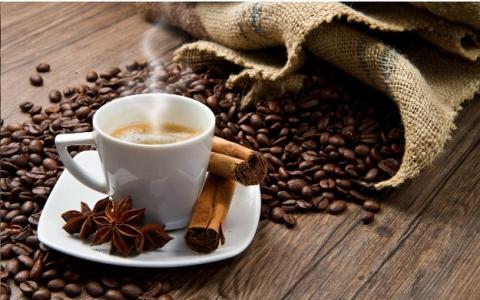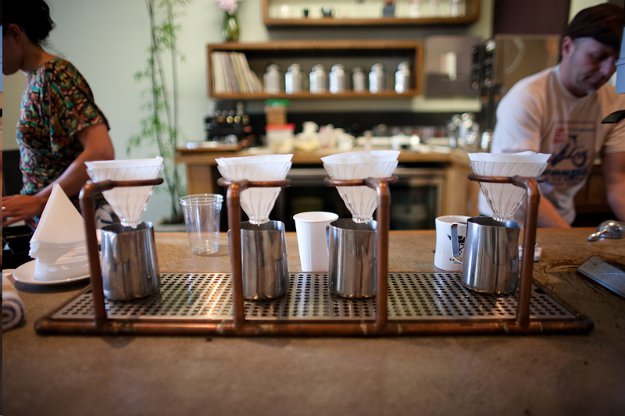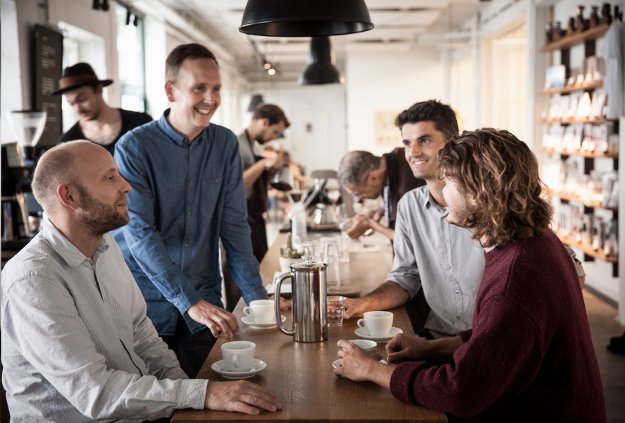Why Coffee Culture Continues to Evolve

Drip coffee. French press. Espresso. Double espresso. Cold brew. Latte on draft. There are very few things people are as loyal to as they are to their favorite coffee - from bean to brew method to barista.
We consume 12 billion pounds of coffee per year worldwide. About 83 percent of adults in the U.S. consume coffee. Ninety percent of coffee production takes place in developing countries, with Brazil at the number one spot.
Brewing Trends
Everyone knows the classic diner drip coffee, and once in a while even ardent coffee connoisseurs might crave one. (Insert arrogant scoff here.)
From K-cup to Bee House there are many options for brewing coffee.

According to a recent article in Medical Daily, coffee consumption is actually down but Americans are spending more thanks to the popularity of Keurig machines. While the pods can’t be recycled, the one-cup method means less coffee is being wasted. It also means less is probably being consumed - with one cup only, there’s no potential to continue topping off your drink to keep it hot. The National Coffee Association reports that more than a quarter of American households own single-serve brewers.
There are also scientific looking single-cup devices like the Chemex. The German-designed contraption has barely changed since 1941. Peter Schlumbohm’s designs were called “a synthesis of logic and madness.” Four to five tablespoons should be ground coarsely for this method.
For a nice-bodied cup or a few cups of coffee, French press is your friend. Its design has barely changed since it was invented in 1929, and it’s a great way to get a fresh cup of coffee in five minutes. The method is pretty simple: grind fresh beans coarsely, add three tablespoons to the French press and fill with boiling water. Mix to evenly distribute the beans, and allow to steep anywhere from 4-7 minutes before pressing down slowly.
Health Benefits of Coffee
Research tends to show that dark foods and drinks such as coffee provide many health benefits.
It has been shown to lessen the likelihood of Parkinson’s Disease, though it seems to be due to the caffeine, and how it works has not yet been discovered. It’s been shown to lower the risk of dementia when three or more cups are consumed daily.
Other benefits are possible regardless of whether the coffee is regular or decaf.

It may lessen the likelihood of getting Type 2 diabetes, according to an Australian study. Though there are many antioxidants in coffee, it hasn’t been determined if those antioxidants appear in the bloodstream when consumed.
Coffee may prevent heart attack and stroke. In a Kaiser Permanente study, 130,000 people were analyzed, and those drinking 1-3 cups of coffee a day were 20 percent less likely to be hospitalized for abnormal heart rhythms, according to WebMD. A 2009 study showed a 20 percent lower risk of stroke for women drinking two cups of coffee or more daily. It possibly reduces the likelihood of liver cancer.
Risks: How much is too much?
Coffee is a mild diuretic, so it may make you urinate more. It also contains acid which may upset your stomach and cause heartburn. A plain cup of coffee has only two calories, according to the Mayo Clinic, but the more sweeteners and milk products you add in, the more calories you’ll consume.
Caffeine consumption should be limited to 400mg per day for healthy adults, which is about four cups of brewed coffee. So be careful when you’re at a restaurant or the office with free “top-ups” available. You can easily consume a day’s worth just in one sitting. People with heart problems or anxiety problems should avoid caffeine.

Oh You Fancy, Huh?
Nespresso has made enjoying espresso easier than ever. It literally takes the push of one button to get a great fresh espresso. Some coffee loyalists will argue that this is a deterrent to small producers and a sad state of affairs for the future of coffee. Nespresso fans are happy with the convenience, taste and exclusivity of the brand.
Ice, Ice, Baby
Cold brew recently became the go-to for the craft coffee crowd feeling like something cold.
Of course to some people, Frappuccino is the only acceptable cold coffee drink. Frozen and laden with sugar, the concoction took the summer by storm when it was introduced in 1995. Twenty years later, the beverage has 187,000 Twitter followers. Now Philadelphia-based La Colombe is introducing its own canned latte, complete with a built-in valve to create a foamy texture.
The cold coffee revolution will continue to heat up, while loyalists remain true to their favorite hot rituals. Some will jump into the buttered coffee health trend. The coffee world will continue buzzing, one cup at a time.
Author Bio:
Beth Kaiserman is Highbrow Magazine’s chief food critic.





























































































































































































































































































































